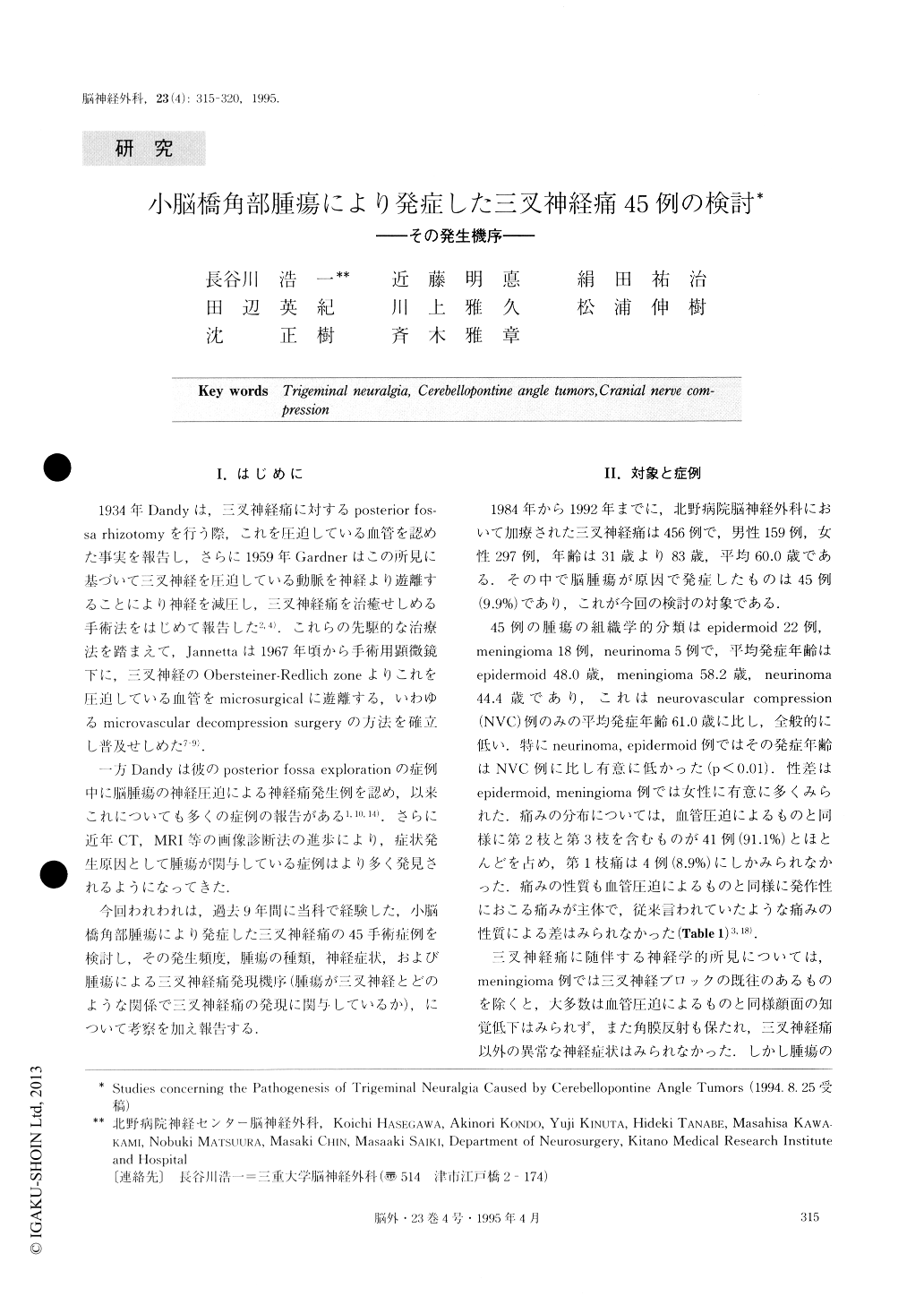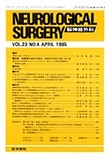Japanese
English
- 有料閲覧
- Abstract 文献概要
- 1ページ目 Look Inside
I.はじめに
1934年Dandyは,三叉神経痛に対するposterior fos—sa rhizotomyを行う際,これを圧迫している血管を認めた事実を報告し,さらに1959年Gardnerはこの所見に基づいて三叉神経を圧迫している動脈を神経より遊離することにより神経を減圧し,三叉神経痛を治癒せしめる手術法をはじめて報告した2,4).これらの先駆的な治療法を踏まえて,Jannettaは1967年頃から手術用顕微鏡下に,三叉神経のObersteiner-Redlich zoneよりこれを圧迫している血管をmicrosurgicalに遊離する,いわゆるmicrovascular decompression surgeryの方法を確立し普及せしめた7-9).
一方Dandyは彼のposterior fossa explorationの症例中に脳腫瘍の神経圧迫による神経痛発生例を認め,以来これについても多くの症例の報告がある1,10,14).さらに近年CT,MRI等の画像診断法の進歩により,症状発生原因として腫瘍が関与している症例はより多く発見されるようになってきた.
It has been well recognized that neurovascular com-pression can elicit trigeminal neuralgia (TN) and micro-vascular decompression surgery has become popular as a radical treatment of this clinical symptom. Cerebello-pontine (C-P) angle tumors, however, as well known, can also cause TN. Four hundred fifty six patients with TN underwent posterior fossa exploration between 1984 and 1992 in our clinic, and among them, 45 (9.9%) patients harbored C-P angle tumors which were causa-tive of TN. They included 22 epidermoids, 18 menin-giomas and 5 neurinomas. The patient population con-sisted of 35 women and 10 men, ranging in age from 28 to 73 years, with a mean age of 51.7 years. The mean age of the patients of TN with tumors is considerably lower than that of neurovascular compression patients (61.0 years), particularly in cases of neurinomas (44.4 years) and epidermoids (48.0 years) (p<0.01). Such difference in ages at the onset of symptom may be ex-plained by the fact that the tumor growth in the C-P angle develops earlier than changes of the vasculature of the vertebrobasilar artery system by aging.
Anatomical relationships between the 5th cranial nerve and offending arteries or tumors verified at surgery are as follows; Type A: The nerve is totally encased by the tumor. Type B: The axis of the nerve is distorted by the tumor. Type C: The nerve is shifted by the tumor and is compressed by the artery contra-laterally. Type D: The nerve is compressed by the artery which was displaced by the tumor. From these operative findings it is proposed that the transaxonal action potential changes elicited by a distortion of the axis of the nerve not only by an arterial compression, but also by tumors or by thick and adhered arachnoid membranes at the Obersteiner-Redlich zone result in causing TN.

Copyright © 1995, Igaku-Shoin Ltd. All rights reserved.


